| ||||||||||||||||||||||
2 governorships | ||||||||||||||||||||||
|---|---|---|---|---|---|---|---|---|---|---|---|---|---|---|---|---|---|---|---|---|---|---|
| ||||||||||||||||||||||
 Democratic hold Republican hold | ||||||||||||||||||||||
The 1949 United States gubernatorial elections were held on 8 November 1949, in two states. In New Jersey, the governor was elected to a 4-year term for the first time, instead of a 3-year term.
| ||||||||||||||||||||||
2 governorships | ||||||||||||||||||||||
|---|---|---|---|---|---|---|---|---|---|---|---|---|---|---|---|---|---|---|---|---|---|---|
| ||||||||||||||||||||||
 Democratic hold Republican hold | ||||||||||||||||||||||
The 1949 United States gubernatorial elections were held on 8 November 1949, in two states. In New Jersey, the governor was elected to a 4-year term for the first time, instead of a 3-year term.
| State | Incumbent | Party | Status | Opposing candidates |
|---|---|---|---|---|
| New Jersey | Alfred E. Driscoll | Republican | Re-elected, 51.54% | Elmer H. Wene (Democratic) 47.13% James Imbrie (Progressive) 0.63% John C. Butterworth (Socialist Labor) 0.38% Edson R. Leach (Prohibition) 0.32% [1] |
| Virginia | William M. Tuck | Democratic | Term-limited, Democratic victory | John S. Battle (Democratic) 70.43% Walter Johnson (Republican) 27.44% Clarke T. Robb (Social Democrat) 2.12% [2] |

Joseph Melville Broughton Jr. was an American politician who served as the 60th governor of North Carolina from 1941 to 1945. He later briefly served as a United States Senator from January 3, 1949 until his death in office approximately two months later.

The 1950 United States Senate elections occurred in the middle of Harry S. Truman's second term as President. As with most 20th-century second-term mid-terms, the party not holding the Presidency made significant gains. The Republican opposition made a net gain of five seats, taking advantage of the Democratic administration's declining popularity during the Cold War and the aftermath of the Recession of 1949. The Democrats held a narrow 49-to-47-seat majority after the election. This was the first time since 1932 that the Senate Majority Leader lost his seat, and the only instance of the majority leader losing his seat while his party retained the majority.

The 1930 United States Senate elections occurred in the middle of Republican President Herbert Hoover's term. With the Great Depression beginning to take hold, Republican incumbents became unpopular, and Democrats picked up a net of eight seats, erasing the Republican gains from the previous election cycle. Republicans retained control of the U.S. Senate since Vice President Charles Curtis cast the tie-breaking vote. This was the first of four consecutive Senate elections during the Depression in which Democrats made enormous gains, achieving a cumulative pick-up of 34 seats.

United States gubernatorial elections were held 6 November 1962 in 35 states, concurrent with the House and Senate elections.

United States gubernatorial elections were held in 1913, in four states. Massachusetts at this time held gubernatorial elections every year, which it would abandon in 1920. New Jersey at this time held gubernatorial elections every 3 years, which it would abandon in 1949. Virginia holds its gubernatorial elections in odd numbered years, every 4 years, following the United States presidential election year.

United States gubernatorial elections were held in 1954, in 34 states, concurrent with the House and Senate elections, on November 2, 1954. The special election in Florida was due to the death of incumbent governor Daniel T. McCarty on September 28, 1953.

United States gubernatorial elections were held in 1950, in 33 states, concurrent with the House and Senate elections, on November 7, 1950.
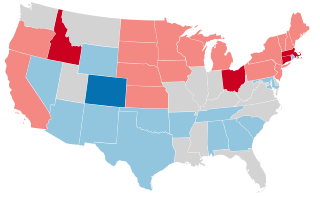
United States gubernatorial elections were held in 1946, in 34 states, concurrent with the House and Senate elections, on November 5, 1946.

United States gubernatorial elections were held in 1942, in 33 states, concurrent with the House and Senate elections, on November 3, 1942.
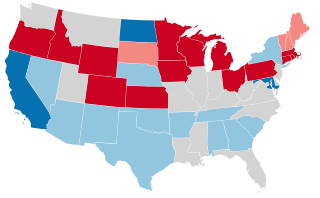
United States gubernatorial elections were held in 1938, in 33 states, concurrent with the House and Senate elections, on November 8, 1938.

United States gubernatorial elections were held in 1926, in 33 states, concurrent with the House and Senate elections, on November 2, 1926.

United States gubernatorial elections were held on 3 November 1925, in two states. Virginia holds its gubernatorial elections in odd numbered years, every 4 years, following the United States presidential election year. New Jersey at this time held gubernatorial elections every 3 years, which it would abandon in 1949.
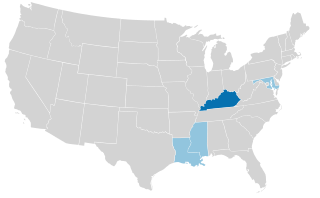
United States gubernatorial elections were held in 1923, in four states. Kentucky, Louisiana and Mississippi hold their gubernatorial elections in odd numbered years, every 4 years, preceding the United States presidential election year.

United States gubernatorial elections were held in 1920, in 35 states, concurrent with the House, Senate elections and presidential election, on November 2, 1920.
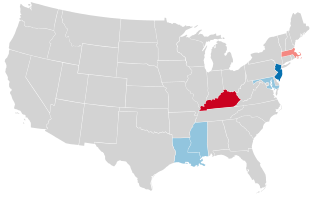
United States gubernatorial elections were held in 1919, in six states. Kentucky, Louisiana, Maryland and Mississippi held their gubernatorial elections in odd numbered years, every 4 years, preceding the United States presidential election year. New Jersey at this time held gubernatorial elections every 3 years, which it would abandon in 1949. This was the last time Massachusetts elected its governors to a single-year term, switching to two years from the 1920 election.

United States gubernatorial elections were held in 1916, in 36 states, concurrent with the House, Senate elections and presidential election, on November 7, 1916.
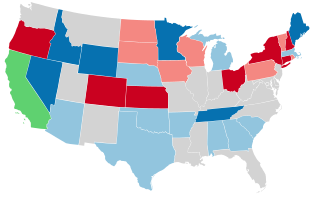
United States gubernatorial elections were held in 1914, in 31 states, concurrent with the House and Senate elections, on November 3, 1914.

United States gubernatorial elections were held in 1907, in eight states.

United States gubernatorial elections were held in 1903, in eight states.

United States gubernatorial elections were held in 1895, in nine states.